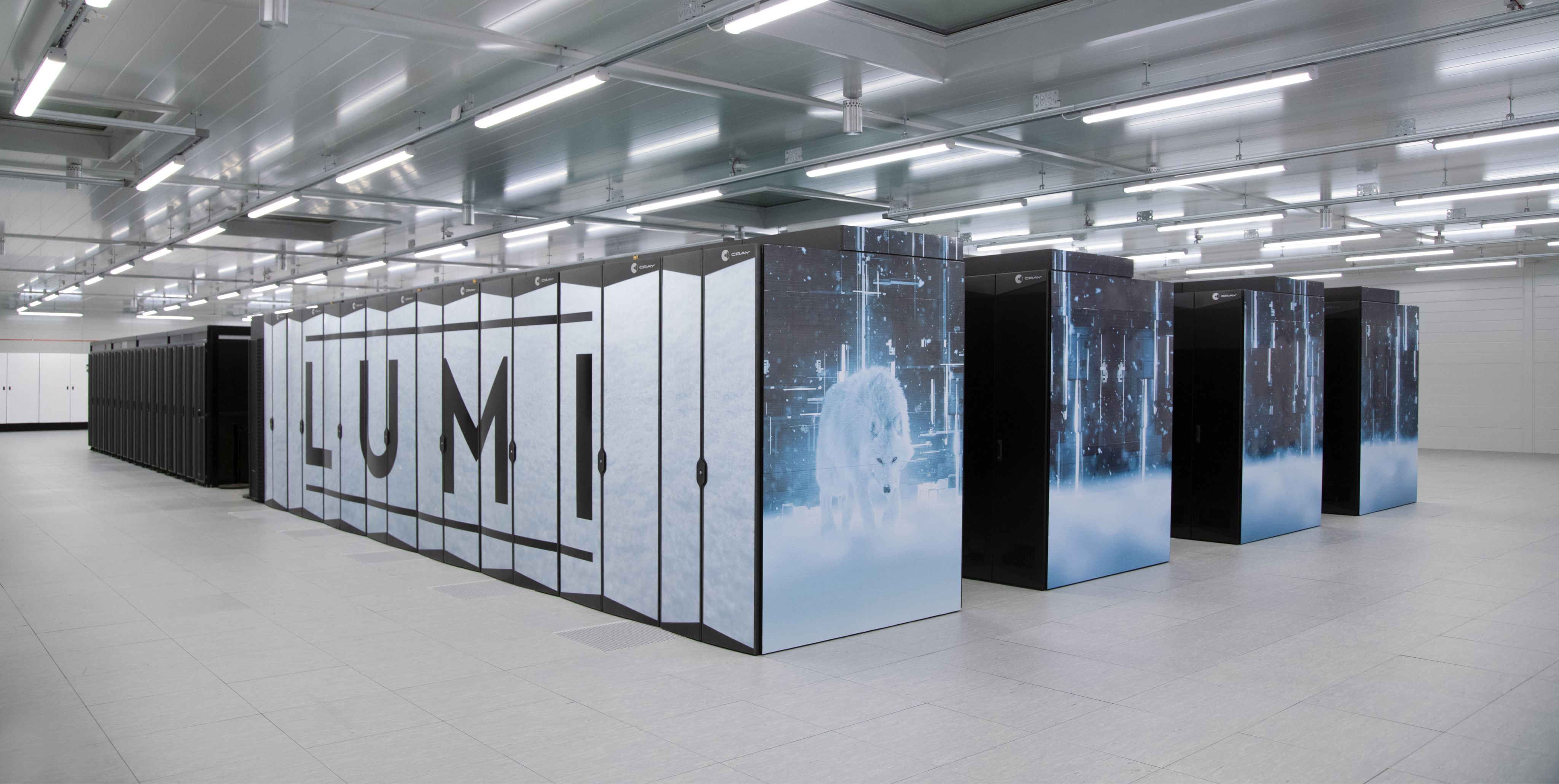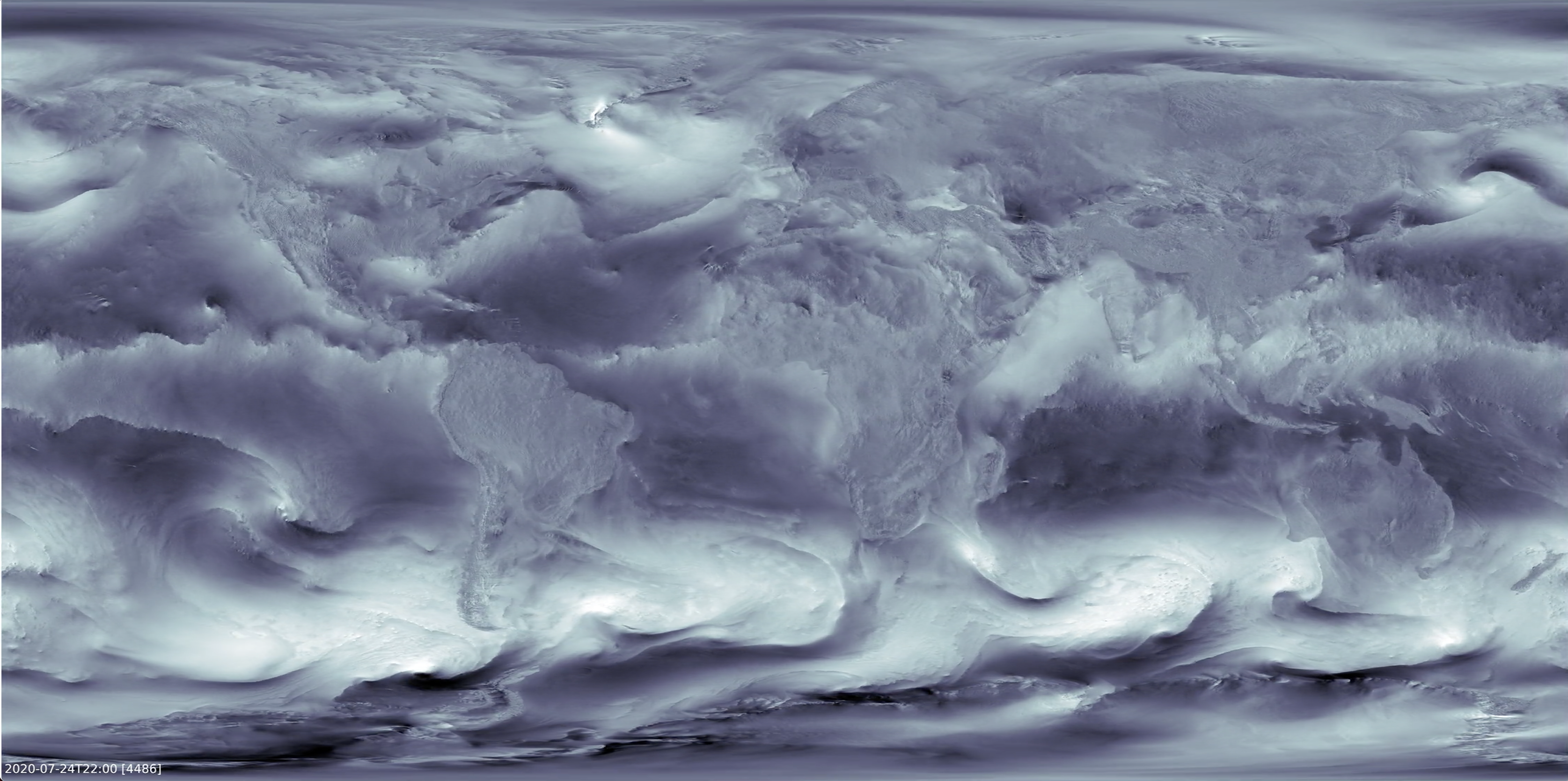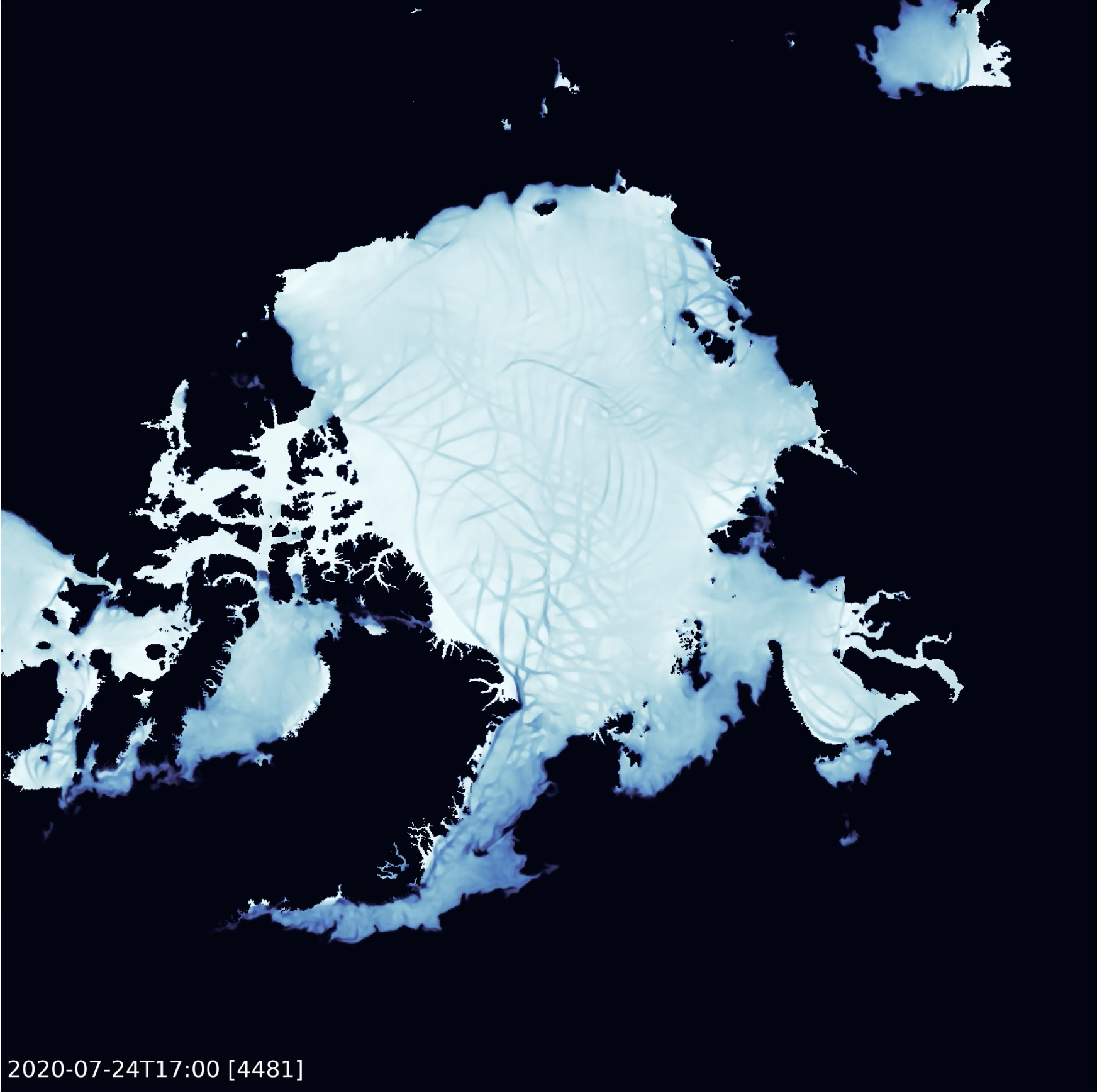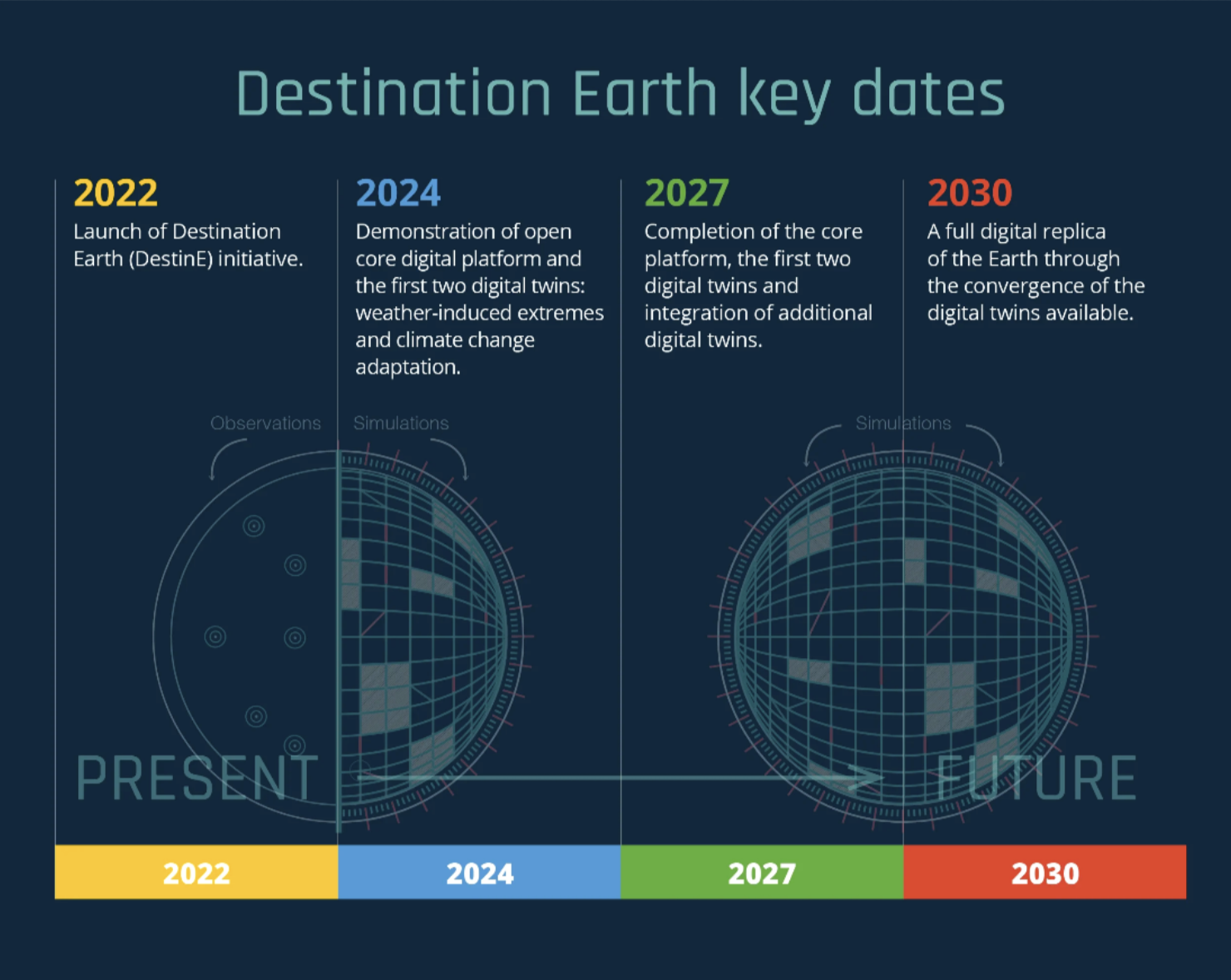Finland’s CSC leads international partnership to deliver Destination Earth’s Climate Change Adaptation Digital Twin

Back to ECMWF - Destination Earth main page
The CSC- IT Center for Science (CSC) in Finland will lead an international partnership to deliver the Climate Change Adaptation Digital Twin awarded in the call for tenders issued by the European Centre for Medium-Range Weather Forecasts (ECMWF) as part of the implementation of Destination Earth, the flagship initiative of the European Commission. The CSC proposal brings together excellence centres from across Europe specialising in climate science and services, Earth system modelling and supercomputing to deliver an innovative climate information system supporting the European Union’s climate adaptation efforts.
The agreement to develop the Climate Change Adaptation Digital Twin (Climate DT), the second high-priority digital twin of Destination Earth (DestinE), has been signed by CSC – IT Center for Science Ltd. and ECMWF on 6 October 2022.
CSC will collaborate with 12 other partners, ranging from National Meteorological Services, supercomputing centres to some of Europe’s top climate research institutions, to provide a configurable climate information system performing multi-decadal global climate simulations at a resolution of 5 kilometers or less.
"We are proud to be selected as the prime contractor to implement the Climate Adaptation Digital Twin solution. This project is a unique endeavour in high-performance computing for its societal impact as well as for its level of ambition , implemented using leading supercomputer platforms in Europe, like LUMI and Marenostrum 5. For example, the LUMI supercomputer is one of the most powerful and advanced supercomputing platforms in the world, and well positioned to host the digital twin due to its computing power and data processing capability." says Dr. Pekka Manninen from CSC, the principal investigator of the Climate DT project and the director of the LUMI supercomputer.

Photo: Pekka Agarth
Photo: Pekka Agarth
The CSC proposal was the winning bid in the invitation to tender (ITT) issued by ECMWF, that is one of the three organizations in charge of implementing DestinE. This ambitious initiative of the European Union aims to create a highly accurate digital twin of the earth system implemented by three entrusted entities, namely ECMWF, the European Space Agency (ESA) and the European Organization for the Exploitation of Meteorological Satellites (EUMETSAT).
ECMWF is also in charge of developing the Extremes digital twin and the Digital Twin Engine (DTE). This engine comprises the software infrastructure that will power the different digital twins involved in DestinE.
The innovative DTE will provide a unified orchestration of Earth-system simulations and their fusion with observations, while ensuring interoperability and efficient data handling on some of the largest supercomputing facilities in Europe governed by the EuroHPC Joint Undertaking.
A new generation of Earth-system models underpinning the Climate DT
A new generation of storm-and-eddy resolving Earth system models will constitute the core of the Climate DT. Two of the leading European Earth-system simulation models, which will be used here, are already being developed under the EU’s Horizon 2020 nextGEMS project (2021-2025):
- ICON from a joint venture between the Max-Planck Institute for Meteorology (MPI-M) , the German Meteorological Service Deutsche Wetterdienst (DWD), the German supercomputing centre (DKRZ) and the Karlsruhe Institute for Technology (KIT).
- ECMWF’s Integrated Forecasting System (IFS) coupled to the NEMO ocean model developed by the NEMO Consortium and, alternatively, to the German Alfred Wegener Institute's FESOM ocean model.
nextGEMS activities have demonstrated that ICON and IFS-FESOM/NEMO models are presently capable of running global coupled simulations at scales finer than 5 km, in the atmosphere, in the ocean and over sea-ice with sufficient throughput on state-of-the-art supercomputers.
“Destination Earth relies on projects like nextGEMS to prepare the science for the next-generation, high-resolution Earth-system models that will form the core of the digital twins of Earth. This convergence of Horizon Europe funded, cutting-edge research and Digital Europe funded technology capability provision by DestinE defines a new step in creating value for society", says Peter Bauer the DestinE director at ECMWF.
“By enabling simulations at an unprecedented scale, DestinE's Climate Change Adaptation Digital Twin will provide a more physical and useful representation of the Earth system” says Prof. Björn Stevens, Managing director of Max Planck Institute for Meteorology. “DestinE will transform our ability to anticipate the consequences of global warming. It will also put Europe at the forefront of efforts to explore how information technologies can immerse people in new digital landscapes — for good.” adds Prof. Stevens.
The climate change adaptation digital twin will further develop global storm-eddy- and sea ice lead-resolving model configurations, which have previously been pioneered in projects such as EU's Horizon2020 nextGEMS project.

Wind gusts around the globe in nextGEMS Cycle 2 simulations (N. Koldunov, AWI)
Wind gusts around the globe in nextGEMS Cycle 2 simulations (N. Koldunov, AWI)

Arctic sea ice cracks in nextGEMS Cycle 2 simulations with IFS-FESOM2 (T. Rackow, ECMWF)
Arctic sea ice cracks in nextGEMS Cycle 2 simulations with IFS-FESOM2 (T. Rackow, ECMWF)
Unprecedented computing capacity for climate modelling
Both models will be adapted and optimized to run efficiently on two of the most powerful European supercomputer infrastructures:
- LUMI, operated by CSC
- MareNostrum 5 of the Barcelona Supercomputing Centre (BSC)
Both supercomputing systems are included in the EuroHPC Joint Undertaking network, a key partner of ECMWF in the Destination Earth endeavour.
"High-performance computing is a key technology for the research aiming at reaching the green deal goals. At CSC, we are fully committed to the Destination Earth initiative and happy to be able to provide our competencies in supporting it", states Kimmo Koski, Managing Director of CSC.
Focus on the final recipients: end users
The Climate Change Digital Twin introduces the idea of a generic state vector, a standardized set of information at full spatial and temporal resolution describing the Earth system that will be common to both Earth system models, allowing interoperability and setting a common and complete information feed for applications from impact sectors. The applications will therefore have access and be exposed to the entire Earth-system simulations for a given window creating unprecedented opportunities for extracting information relevant to impact sectors.
Complying with the exigent requirements of ECMWF’s ITT, the Climate DT will demonstrate its added value for applications of societal relevance by developing early prototype use cases together with users from five climate adaptation impact sectors: urban environments, hydrology, hydro-meteorology, energy and forestry. It will thus create a basis for an interactive information system tailored to the user needs via innovative co-design strategies, that can be scaled up for wider use in future phases of DestinE.
"The DestinE Climate Change Adaptation Digital Twin uses the recent breakthroughs in the connection between climate modelling and the production of user-relevant climate information. The recent developments in global climate modelling and high-performance computing and a better understanding of user requirements will allow users from relevant impact sectors to contribute to the design of the digital twin. This co-design represents a paradigm shift in the provision of climate information"
Francisco J Doblas-Reyes, Earth Sciences Department Director, Barcelona Supercomputing Center.
European excellence brought together for an unprecedented challenge
CSC is a non-profit centre for information technology owned by the Finnish state and higher education institutions, which hosts and operates the LUMI supercomputer. CSC has a track record of more than half a century for providing information and communication technology services for research, culture, public administrations and private sector in a wide variety of fields ranging from environmental sciences or mathematical modelling to social sciences and humanities.
To ensure that the Climate Change Adaptation Digital Twin is delivered within the demanding deadlines of DestinE and to make the most of the collective European expertise, CSC is teaming up with top-level partners covering all the aspects necessary to create the new capability:
Why a Climate Change Adaptation Digital Twin?
The impacts of extremes are increasing as our society is becoming more exposed to climate change with yet unknown regional impacts. Climate simulation systems struggle to provide the vital information needed to derive climate change adaptation and mitigation measures at these scales.
With DestinE the European Union takes a decisive step to create a new generation of climate information systems building on the latest scientific research and enabled by novel digital technologies. This information system will provide more detail and accuracy and introduces configurability and user interactivity to enhance the uptake of the information by society. It will thus complement existing climate information from existing services like the Copernicus Climate Change Service or the Coupled Modelling Intercomparison Project (CMIP).

A tight delivery timeline
During the first phase of DestinE, the Climate DT will demonstrate 5 km multi-decadal simulation capabilities developed in tight cooperation with selected impact sectors users to show a step-change in both information quality and information accessibility. The first phase will also assess the system’s quality and quantify uncertainties through the use of observations.
In further phases, the use cases base will be enlarged and the fidelity and performance of the system be improved.
A key development in the ECMWF’s roadmap for Destination Earth
The award of the Climate Change Adaptation DT marks another important milestone in ECMWF’s role in DestinE following the contract awarded to Météo-France and a large European partnership in September to build the On-Demand Extremes Digital Twin.
ECMWF has signed an agreement with Italy’s Cineca, providing invaluable expertise in adapting codes and models to the EuroHPC and cloud computing environment.
Destination Earth is a European Union funded initiative launched in 2022, with the aim to build a digital replica of the Earth system by 2030. The initiative is being jointly implemented by three entrusted entities: the European Centre for Medium-Range Weather Forecasts (ECMWF) responsible for the creation of the first two ‘digital twins’ and the ‘Digital Twin Engine’, the European Space Agency (ESA) responsible for building the ‘Core Service Platform’, and the European Organisation for the Exploitation of Meteorological Satellites (EUMETSAT), responsible for the creation of the ‘Data Lake’.
We acknowledge the EuroHPC Joint Undertaking for awarding this project strategic access to the EuroHPC supercomputers LUMI, hosted by CSC (Finland) and the LUMI consortium, Marenostrum5, hosted by BSC (Spain) Leonardo, hosted by Cineca (Italy) and MeluXina, hosted by LuxProvide (Luxembourg) through a EuroHPC Special Access call.
More information about Destination Earth is on the Destination Earth website and the EU Commission website.
For more information about ECMWF’s role visit ecmwf.int/DestinE
For any questions related to the role of ECMWF in Destination Earth, please use the following email links:
Press and Communications enquiries
Further reading:
ECMWF Destination Earth webpage
Shaping Europe's Digital Future
Video credits - Videezy
